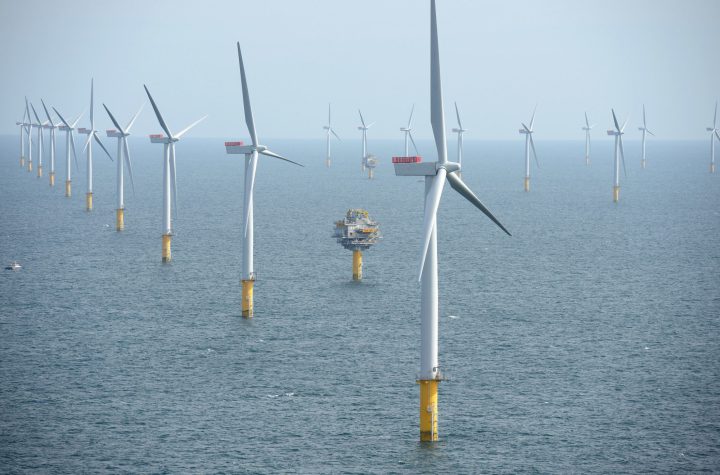Renewables-based ‘smart grid’ keeps lights on even during ‘wind lull’, and does so affordably
New report finds smart, flexible power grid is key to energy security as wind and solar provide half of UK’s electricity
By George Smeeton
info@eciu.netShare
A smart grid based around wind and solar power would be able to keep Britain’s lights on even during an extreme three-week ‘wind lull’ in the middle of winter, a new analysis shows.

This is a key finding in a report by New Resource Partners on the resilience of a smart, flexible power system increasingly dominated by variable renewable sources of electricity.
The report also found that by 2030, a UK electricity system where wind and solar generate 50 per cent of the country’s electricity is comparable on cost with one dominated by gas-fired power stations.
Hugo Chandler, director of New Resource Partners and the report’s author, said: “A common concern that people have about an energy system that relies on large amounts of variable renewables is, what happens when the wind doesn’t blow or the sun doesn’t shine?
“This is a reasonable question, although it does overlook the fact that variable renewables already supply nearly 20 per cent of our electricity needs in Britain with no loss of energy security. But we wanted to set our future grid a tough test; what happens if the wind doesn’t blow for an extended period during winter, when solar is also restricted and demand is highest?
“Our modelling shows that the lights would stay on, and key to making this happen is ensuring that our future grid is truly a smart, flexible one.”
The analysis used New Resource Partner’s REDM model, drawing on real-world data on wind and solar generation. An extreme three-week ‘wind lull’ (i.e. with little or no wind generation) in the middle of winter was modelled, when electricity demand is at its highest.
It finds that energy security is maintained, with less gas generation capacity needed as back-up than the UK currently possesses. Gas-fired power stations and interconnectors support baseload generation, as demand-shifting and energy storage smooth out peaks in demand.
On cost, the model compares a future UK energy system in which gas capacity increases to cover UK demand once the existing pipeline of renewable projects is complete, against one in which renewable generation reaches 50 per cent. It found that the cost of both systems is broadly comparable, with the high-renewables system proving more expensive initially but becoming cheaper by 2030.
The report was commissioned by the Energy and Climate Intelligence Unit (ECIU) in order to understand the capacity of a smart energy grid to support Britain’s low-carbon transition, and an energy system increasingly dominated by variable wind and solar power.
It found that the four flexibility mechanisms inherent in a smart grid – demand shifting (or demand-side response, DSR), energy storage, trade with Europe via interconnectors and flexible gas-fired power plants – deliver robust energy security even in challenging conditions.
New Resource Partners argues that Government and regulators should support flexible and renewable power technologies, including through the development of more appropriate markets. NRP’s recommendations include building a flexibility market and opening up access; supporting deeper and more liquid energy trading on a last-minute basis, as well as smart local power markets; and more energy trading with European partners.
ECIU director Richard Black said: “That we are in Britain, in common with many other advanced economies, already well on the way to a smart, flexible power system is not news to people who follow developments in our energy system.
“However, if you don’t follow this day by day you may not appreciate how the smart system is advancing, and so may be concerned about our increasing reliance on variable sources of electricity generation. With this report, we wanted to throw some light on the smart grid, to help people understand why investing sensibly in these mechanisms is critical as we develop an energy system fit for the 21st Century that is clean, reliable and cost-effective.”
The report, GB Power Transition: Get Smart, is available here.
New Resource Partners is a UK-based consultancy specialising in the integration of renewables in electricity systems around the world. Report author Hugo Chandler formerly led the International Energy Agency’s work in this area.